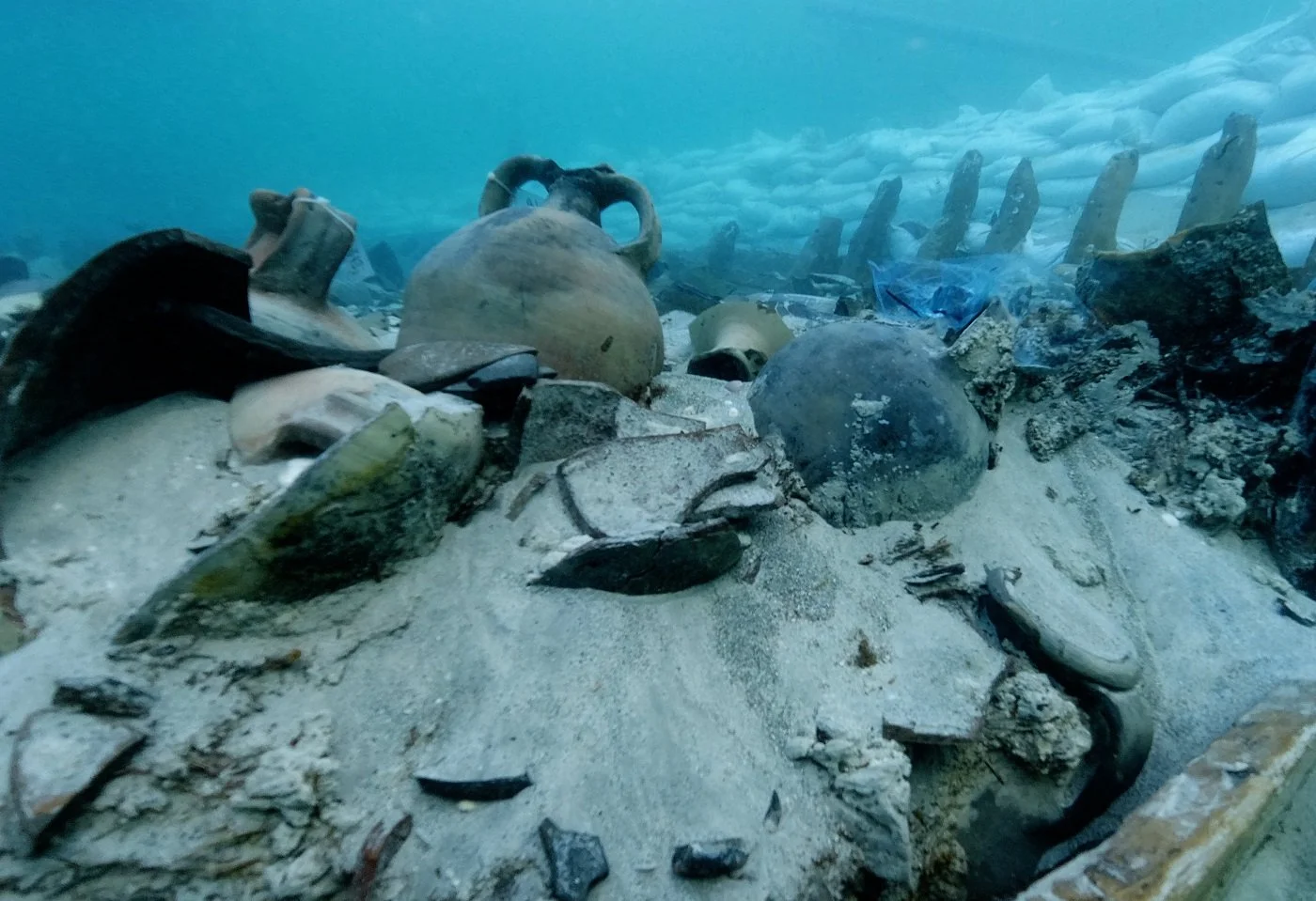A study of a Roman shipwreck off the coast of Mallorca has identified a new type of amphora.
The shipwreck, known as the shipwreck of Ses Fontanelles, was discovered 65 metres from the coast of a tourist beach near Mallorca’s capital of Palma.
According to a paper published in the journal Archaeological and Anthropological Sciences, the ship dates from the 4th century and likely departed from Cartagena in southeastern Spain while navigating the trade routes of the western Mediterranean.
Archaeologists found in the hold a cargo packaged in amphorae, some of which have painted inscriptions (tituli picti) on the exterior. The inscriptions provide information such as the origin, destination, type of product, and the owner of the goods – identified as “Alunnius et Ausonius.”
The amphorae have been classified into four main group types. The most abundant is the Almagro 51c type amphorae, for which the tituli picti indicate a contents of fish sauce which derives almost exclusively from a single species: the European anchovy (Engraulis encrasicolus)
The other groups consist of the flat-bottomed amphorae, the Keay XIX type, and a new type of amphora named Ses Fontanelles I, which is larger and heavier than most other amphorae types and was used for carrying plant oil.
According to the study authors: “All the analytical data suggest that Alunnius et Ausonius prepared a trade enterprise fleeting, a merchant ship with a cargo composed mainly of fish sauce (Liquaminis flos), in Almagro 51c amphora, oil transported in Ses Fontanelles I amphorae (probably an imitation of Dressel 23 type), and grape derivates or fruits preserved in those substances in flat-bottomed amphorae.”
Header Image Credit : Arqueomallornauta – Consell de Mallorca
Sources : Cau-Ontiveros, M.Á., Bernal-Casasola, D., Pecci, A. et al. Multianalytical approach to the exceptional Late Roman shipwreck of Ses Fontanelles (Mallorca, Balearic Islands, Spain). Archaeol Anthropol Sci 16, 58 (2024). https://doi.org/10.1007/s12520-024-01952-3





